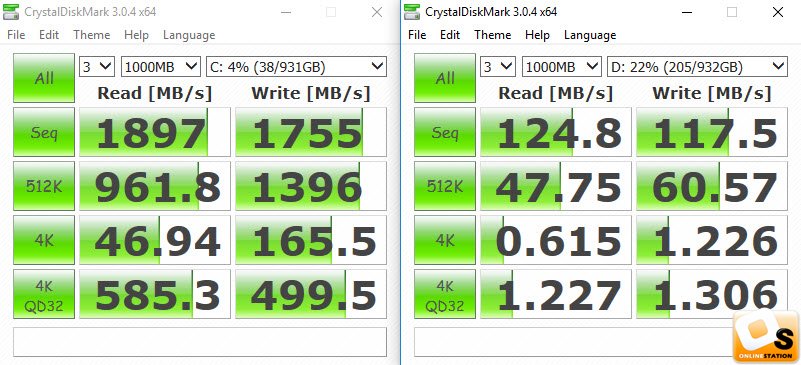

The Copy part of the AS SSD application simulates moving a range of file sizes defined as ISO, Program and Game. 4K-64 reading and writing were both top level. Sequential reading was second only to the Toshiba Q300 in the SATA competitors, although it was marginally behind a few drives, including the drive it replaces in the write test.Ĭonversely, it was slightly slower at 4K reads that the Evo 850, but trounced it and everything else in the 4K writes. Wishing not to put all our testing eggs in just the CrystalDiskMark basket, AS SSD provides a good opportunity to support (or contradict) our other benchmarks. In all other respects this drive is an excellent performer, and a worthy replacement. The only weakness of this design is the 4KiB Random Reads, where it presents the same sort of mediocre results that marred the 850 Evo. Write speed is also the best we’ve seen on SATA, and is only trumped by those drives that use PCIe connections.Īgain, the 860 Evo is up with the best performance devices bettering all but the PCIe drives on reads and only the Kingston KC400 on writes.
#960 EVO DISKMARK SERIES#
Bettered only by the Integral P Series 4 on reads, the 860 Evo is very close to the maximum practical speed for any drive connected using SATA III 6G/s technology. If you don’t wish to plough through all the Bench results, we’re happy to tell you now that the 860 Evo is a fine replacement for its 850 Evo predecessor, and about one of the best SATA drives you can get today.Ĭompared with any conventional hard drive the 860 Evo just barrels along, and even compared with other SATA SSDs it isn’t a slouch.
#960 EVO DISKMARK PC#
In these tests we didn’t activate RAPID Mode, as how well this works is entirely dependent on the speed and amount of RAM on the PC and would skew the results against those drives that don’t use the same utility. Our typical weapons of choice for benchmarking SSDs are CrystalDiskMark and AS SSD benchmark, both of which provide accurate, reliable synthetic benchmark data. The minimum cache was 256MB (on the 120GB), the 250GB and 500GB drives got double that, and 1GB of LPDDR2 was on the 1TB drive. On the previous SATA 850 Evo the drives came in sizes from 120GB to 1TB, and they used a mix of the Samsung MGX controller and the older MEX chip (on the 1TB). Well, there are a number of significant differences between this and its predecessor that are to do with the new Samsung MJX controller, the amount of cache memory and how these and other modifications have significantly impacted on the MTBF (mean time before failure).
#960 EVO DISKMARK FULL#
The obvious question is therefore why you would want the 860 Evo over a previous design, like the 850 Evo, that could also nearly achieve the full experience of SATA III? Samsung quotes 550MB/s reads and 520MB/s writes, and that’s where the SATA III express train hits the virtual buffers, so to speak. Therefore benchmarking the throughput of the Samsung 860 Evo is a marginally pointless exercise, as we’d be testing SATA III performance and not that of the 860 Evo.


 0 kommentar(er)
0 kommentar(er)
